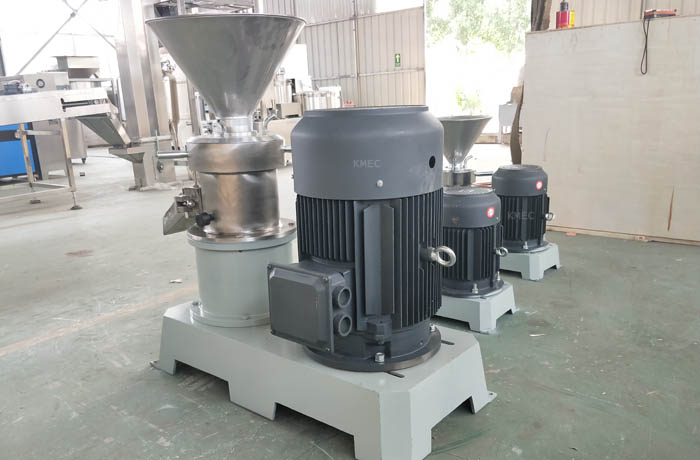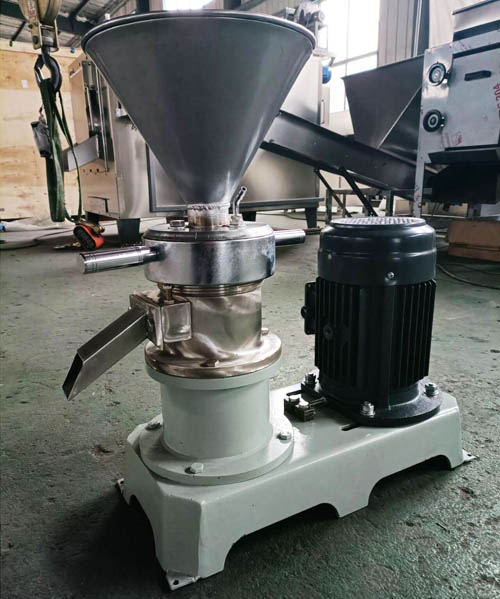What are the consumptions when the peanut butter machine is running?
Peanut butter machines are essential equipment in food processing plants, commercial kitchens, and even households, used to process peanuts into smooth or crunchy peanut butter. Understanding the operational costs and energy consumption factors of these machines is vital for maximizing efficiency and profitability. This guide comprehensively analyzes the various energy consumption aspects of peanut butter gringding machine operation and provides practical strategies for optimizing performance.

Primary Operational Consumptions of Peanut Butter Machines
Power consumption
When the peanut butter machine is running, the motor is its core component, responsible for driving the grinding disc at high speed. Therefore, electricity is its primary energy consumption. The higher the machine’s power and the longer it operates, the greater its power consumption. Furthermore, if the equipment is not maintained for a long time or is used inefficiently, additional energy may be wasted.
Wear of mechanical components
During the operation of a peanut butter machine, mechanical components such as the grinding disc and bearings will experience wear due to the high frequency of rotation. The degree of wear is closely related to the frequency of use, the hardness of the raw material, and the quality of the equipment. After long-term use, these components may require regular replacement or maintenance, which is also a hidden cost.
Lubricant consumption
To ensure smooth operation and extend the lifespan of the machine, most peanut butter machines require regular lubrication. Lubricant reduces friction between mechanical components, but it depletes with use and requires regular replenishment.
Raw material consumption and loss
During the processing process, peanuts, the primary raw material, can be wasted due to insufficient grinding or adherence to the machine’s internal walls. This loss can be exacerbated by improper operation and inadequate cleaning.
Time cost
Although time itself does not directly belong to material consumption, the length of equipment operation time will affect the overall production efficiency. If the equipment is inefficient, it may take more time to produce the same amount of peanut butter, which indirectly increases the cost of electricity and labor.

Cleaning and maintenance costs
During the peanut butter processing process, grease and fine particles are left inside the machine. To maintain hygiene and extend the life of the equipment, regular cleaning is necessary. This cleaning process may require detergent, water, and labor, all of which are additional costs.
To sum up, when the peanut butter machine is running, the consumption is mainly reflected in power, mechanical parts, lubricating oil, raw material loss, time together with cleaning and maintenance. In order to reduce consumption and improve efficiency, users are advised to choose high-quality equipment, operate it reasonably and maintain it regularly.
The operational energy consumption of peanut butter machines encompasses multiple factors, including electricity usage, mechanical wear, lubrication requirements, raw material utilization, time allocation, and maintenance demands. By understanding these energy consumption areas and implementing strategic optimizations, operators can significantly enhance efficiency and profitability.
Investing in high-quality industrial peanut butter machines, establishing rigorous maintenance protocols, training operators in best practices, and leveraging technological advancements constitute a comprehensive approach to managing operational costs. Conducting regular performance audits and staying informed about equipment innovations will ensure your peanut butter production remains competitive and sustainable within the evolving food processing landscape.
For commercial operations, partnering with reputable equipment suppliers to secure comprehensive technical support and spare parts availability further prevents unexpected downtime, ensuring your peanut butter business maintains consistent and stable production.
